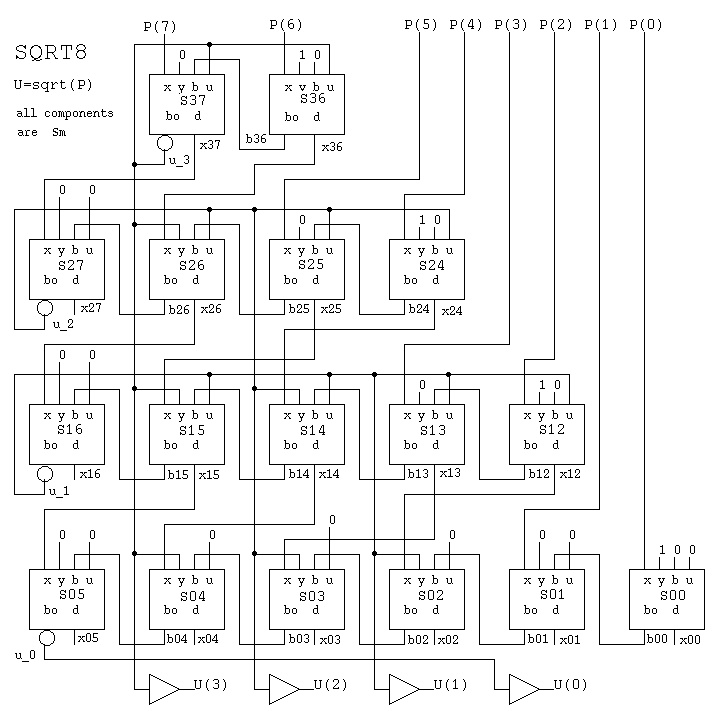Serial Multiplier Vhdl Code Examples
Brother Hl-2032 Driver Xp on this page. VHDL samples VHDL samples The sample VHDL code contained below is for tutorial purposes. An expert may be bothered by some of the wording of the examples because this WEB page is intended for people just starting to learn the VHDL language. There is no intention of teaching logic design, synthesis or designing integrated circuits. It is hoped that people who become knowledgeable of VHDL will be able to develop better models and more rapidly meet whatever their objectives might be using VHDL simulations.
• • • • • • • • • • • • • • A few VHDL compilers have bugs. 'alias' may have to be eliminated. The VHDL source code is This demonstrates the use of formatting text output to a screen. A process is used to contain the sequential code that builds an output line, then writes the line to standard output, the display screen. Almost identical VHDL code uses a procedure in place of the process to contain the sequential code. Note that the procedure has no arguments and the call needs no label.

Simply the statement my_proc; in the architecture is the call. The VHDL source code is This example is a skeleton for a VHDL simulation that needs input from a file, simulates based on the input and produces output to a file. The output file may be used as input to other applications. The importance of being able to write to the display screen and to read and write files is to maintain portability of your VHDL code.

Especially test benches, must be independent of any specific VHDL systems Graphic User Interface, GUI. GUI differ radically and it may be important to you to be able to develop and debug your VHDL code independent of the host machine and independent of the VHDL system supplier. The VHDL source code is The output of the VHDL simulation is The schematic is The Sm component schematic is This example shows how a Sm component is directly coded in VHDL as concurrent statements. The multiplexor is coded as a single 'when' statement. 'Sm' is mnemonic for subtractor-multiplexor. The overall circuit that inputs an 8-bit integer and outputs a 4-bit integer square root uses many copies of the Sm component.
This circuit uses the 'entity' method of instantiating copies of a component. The 'port map' is the mapping of actual parameters onto the formal parameters in the Sm entity. The theory of operation is described in and The VHDL source code is The output of the VHDL simulation is The schematic is This circuit performs the same function on the input as does sqrt8.vhdl above. The difference is that many specialized entities were created as building block components.
The specialization eliminates circuitry that is not needed because the inputs are logical 0 or 1. This was a step in developing the parallel 32-bit square root circuit shown next. The Sm component family are subsets of the schematic The VHDL source code is The output of the VHDL simulation is The schematic was never drawn. Sqrt8m.vhdl was expanded using 'generate' statements to create sqrt32.vhdl Common building blocks for simulating digital logic are adders, registers, multiplexors and counters. This example shows a set of generic entities and the corresponding architectures that have the word length and delay time as generic parameters. Ufs Game.
In addition to being useful in circuits, the generic word length allows much smaller circuits to be debugged and then the word length increased to the final desired value. The test bench uses a word length of 8 while the example circuit that performs a sequential multiplication uses a 16 bit word length. Similar to the entity declaration 'port' and the entity instantiation 'port map', with generics there is an entity declaration 'generic' and the entity instantiation 'generic map.' The VHDL source code for the generic adder is The VHDL source code for the generic register is The VHDL source code for the generic multiplexor is The VHDL source code for the generic counter is The VHDL source code for the generic test bench is The output of the VHDL simulation is The VHDL source code for the generic serial multiplier is The output of the VHDL simulation is This simulation models a multiplier using 'hi' and 'lo' registers used in the MIPS architecture and is similar to the Patterson and Hennessey example. The VHDL source code for a barrel shifter, includes both behavioral and circuit description The VHDL source code for testing bshift.vhdl and comparing the behavioral model to the circuit model Note the example use of a package and a function definition to convert the 5-bit std_logic_vector shift count 'shift' to an integer 'shft' The one process 'test_data_generator' updates the signal 'count' and also prints the results of the behavioral and circuit model for the three types of shifts: left logical, right logical and right arithmetic. The output of the VHDL simulation is A partial schematic of the right logical shift is The VHDL source code for a serial multiplier, using a shortcut model where a signal acts like a register. 'hi' and 'lo' are registers clocked by the condition mulclk'event and mulclk='1' The VHDL is The output of the simulation is At the start of multiply: the multiplicand is in 'md', the multiplier is in 'lo' and 'hi' contains 00000000.